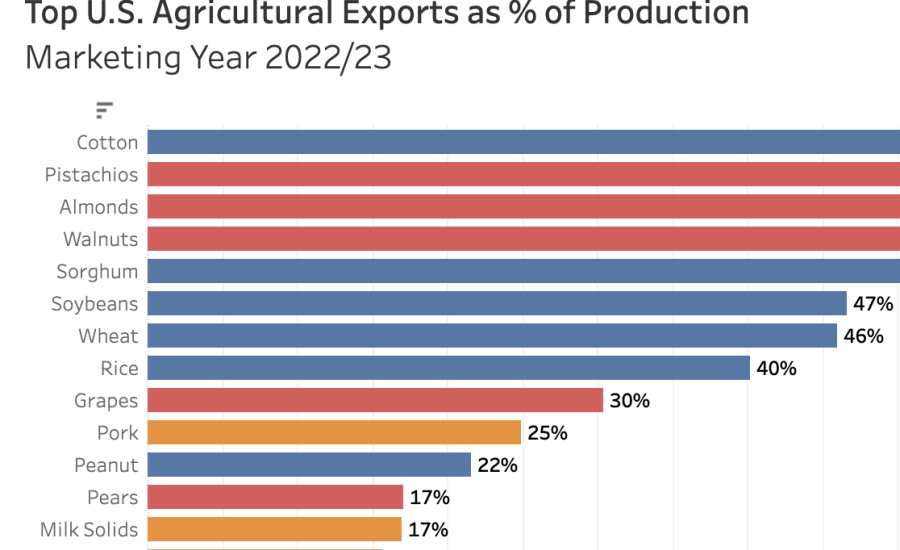Browse Data and Analysis
Filter
Search Data and Analysis
On May 8-9, 2025, FAS Jakarta and U.S. Embassy Dili led the first agricultural trade delegation of U.S. industry groups in Timor-Leste. The delegation met with senior government officials, importers, and private industry to explore opportunities for U.S. commodities.
In 2024, Taiwan was the eighth-largest market for U.S. agricultural exports, valued at $3.8 billion, 16 percent greater than 5 years ago. The top five U.S. agricultural exports to Taiwan are beef and beef products, soybeans, corn, wheat, and fresh fruits.
The 2024 U.S. Agricultural Export Yearbook provides a statistical summary of U.S. agricultural commodity exports to the world during the 2024 calendar year.
On March 31, 2025, the Government of Vietnam (GVN) issued Decree 73/2025/ND-CP, reducing the Most-Favored-Nation (MFN) import tariff rates on corn, soybean meal, ethanol, frozen chicken drumsticks, in-shell pistachios, almonds, fresh apples, cherries, and raisins. The decree takes effect immediately.
Since USDA first established a stand-alone mission area focusing on trade and international affairs in 2017, USDA’s Trade and Foreign Agricultural Affairs and the Foreign Agricultural Service have made significant trade policy advances to support U.S. agriculture. This series of commodity fact sheets highlights the many recent trade policy advances achieved by USDA.
While the United States holds a 5-year average of less than 1 percent market share ($20.7 million in 2023 exports), Senegal has a growing food manufacturing industry that seeks cost-competitive ingredients and is expanding its exports to neighboring countries.
U.S. agricultural exports are a critical source of farm income. The USDA Economic Research Service estimates that on average 23 percent of the output of nonmanufactured agricultural products were exported between 2013 and 2022.
The 2023 U.S. Agricultural Export Yearbook provides a statistical summary of U.S. agricultural commodity exports to the world during the 2023 calendar year.
On December 22, 2023, President Ferdinand Marcos, Jr. signed Executive Order No. 50 (EO 50) extending lower tariffs on pork, corn, and rice for another year or until December 31, 2024. EO 50 was published on December 26, 2023, and took effect immediately upon publication.
On October 20, 2023, Jordan notified the World Trade Organization (WTO) of a new Sanitary and Phytosanitary (SPS) measure on poultry meat imports (G/SPS/N/JOR/44).
Located on the west coast of southern Africa, Angola borders the four nations of the Democratic Republic of the Congo, the Republic of the Congo, Namibia, and Zambia. Approximately 10 percent of arable land is used for agriculture, with food production falling short of consumer demand, making Angola reliant on imports to meet its needs.
The U.S.-Japan Trade Agreement, which entered into force on January 1, 2020, improved market access for U.S. products through the creation of tariff-rate quotas (TRQs) for food wheat, wheat products, malt, processed cheese, whey, glucose and fructose, potato starch, corn starch, and inulin.

